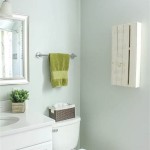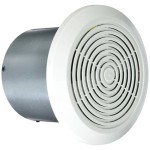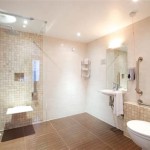How To Tile a Bathroom Wall: A Comprehensive Guide
Tiling a bathroom wall is a valuable skill for any homeowner, offering the opportunity to personalize the space and enhance its durability and aesthetic appeal. While it may seem daunting, with careful planning, the right tools, and a step-by-step approach, achieving a professional-looking result is entirely possible. This article provides a detailed guide to tiling a bathroom wall, covering everything from preparation to finishing touches.
1. Preparation is Key: Planning and Gathering Supplies
The foundation of a successful tiling project lies in thorough preparation. Before commencing any physical work, it is crucial to plan the layout, calculate material requirements, and gather all necessary tools and materials. This stage minimizes errors and ensures a smooth workflow.
Planning the Layout: Start by accurately measuring the wall space to be tiled. Consider the desired tile pattern and how it will align with existing fixtures like bathtubs, showers, and sinks. A symmetrical layout is often preferred, with full tiles centered in the most visually prominent areas. If necessary, use a level and straight edge to draw vertical and horizontal guidelines on the wall to help visualize the tile placement. Pay close attention to corners and edges, as these areas often require cutting tiles.
Calculating Material Requirements: Determining the quantity of tiles, adhesive (thin-set mortar), grout, and sealant is essential to avoid running out of supplies mid-project. Calculate the total square footage of the wall and add a wastage factor (typically 10-15%) to account for cuts and potential breakage. Consult the thin-set mortar manufacturer's instructions to determine the coverage per bag. Similarly, estimate the amount of grout needed based on the tile size and grout joint width specified in the tile selection. Finally, purchase enough sealant for all edges and corners.
Gathering Tools and Materials: The following tools and materials are typically required for tiling a bathroom wall: * Tiles (selected based on desired style and size) * Thin-set mortar (choose a type suitable for the selected tiles and substrate) * Grout (choose a type and color that complements the tiles) * Sealant (waterproof sealant for edges and corners) * Tile spacers (to ensure consistent grout joint width) * Notched trowel (size determined by tile size) * Tile cutter (manual or wet saw) * Grout float * Grout sponge * Bucket (for mixing thin-set mortar and grout) * Mixing paddle (attaches to a drill for efficient mixing) * Level * Tape measure * Pencil * Safety glasses * Gloves * Dust mask * Clean cloths * Caulk gun (for applying sealant)
Selecting the correct thin-set mortar is vital to the success of the tile installation. Different types of thin-set mortar are formulated for specific types of tiles (e.g., ceramic, porcelain, natural stone) and substrates (e.g., drywall, cement board). Using the wrong type of thin-set mortar can lead to weak adhesion and tile failure over time.
2. Preparing the Wall Surface: Ensuring Proper Adhesion
The wall surface must be clean, dry, and structurally sound to provide a suitable base for tiling. Improperly prepared surfaces can lead to tile cracking, loosening, or even complete failure. This phase involves cleaning, repairing, and, in some cases, applying a waterproof membrane.
Cleaning the Wall: Remove any existing wallpaper, paint, or adhesive residue from the wall surface. Use a scraper and appropriate solvents to remove stubborn materials. Thoroughly clean the wall with a mild detergent and water to remove any dust, grease, or dirt. Rinse the wall with clean water and allow it to dry completely.
Repairing Damage: Inspect the wall for any cracks, holes, or unevenness. Repair any damage with patching compound or drywall mud. Allow the patching compound to dry completely and sand it smooth to create a level surface. If the wall is severely damaged, consider replacing the damaged section of drywall or cement board.
Applying a Waterproof Membrane (Optional): In areas exposed to direct water spray, such as showers and bathtub surrounds, it is highly recommended to apply a waterproof membrane to the wall. This membrane protects the underlying substrate from water damage and prevents mold growth. There are two main types of waterproof membranes: liquid-applied membranes and sheet membranes. Liquid-applied membranes are painted onto the wall surface, while sheet membranes are applied like wallpaper. Follow the manufacturer's instructions carefully when applying either type of membrane.
Priming the Wall: After cleaning, repairing, and waterproofing the wall, apply a primer specifically designed for tiling applications. Priming enhances the adhesion of the thin-set mortar to the wall surface. Allow the primer to dry completely according to the manufacturer's instructions.
The use of cement board in wet areas like showers is strongly suggested. Cement board is water-resistant and provides a stable, durable substrate for tiling. Make sure the cement board is properly installed according to the manufacturer's instructions, with joints taped and sealed with thin-set mortar.
3. Tiling the Wall: Applying Tiles and Maintaining Alignment
With the wall properly prepared, the tiling process can begin. This involves mixing the thin-set mortar, applying it to the wall, and carefully placing the tiles, ensuring proper alignment and spacing. The accuracy and attention to detail during this stage directly impact the final appearance of the tiled wall.
Mixing Thin-Set Mortar: Add the thin-set mortar powder to water in a clean bucket, following the manufacturer's instructions regarding the water-to-powder ratio. Use a mixing paddle attached to a drill to thoroughly mix the mortar until it reaches a smooth, consistent consistency similar to peanut butter. Allow the mortar to slake (rest) for 5-10 minutes, then remix briefly before use.
Applying Thin-Set Mortar: Using the notched trowel, apply a layer of thin-set mortar to a small section of the wall (typically 2-3 square feet). Hold the trowel at a 45-degree angle and create ridges in the mortar. The size of the notches on the trowel will determine the thickness of the mortar bed, which should be appropriate for the size of the tiles being used. Work in small sections to prevent the mortar from drying out before the tiles are placed.
Placing the Tiles: Press the tiles firmly into the thin-set mortar, wiggling them slightly to ensure good adhesion. Use tile spacers between the tiles to maintain consistent grout joint width. Regularly check the alignment of the tiles with a level to ensure they are straight and plumb. If necessary, gently tap the tiles with a rubber mallet to adjust their position. Remove any excess thin-set mortar from the tile surfaces with a damp sponge.
Cutting Tiles: Cutting tiles is often necessary to fit them around corners, edges, and fixtures. Use a tile cutter (manual or wet saw) to make precise cuts. Wear safety glasses when cutting tiles to protect your eyes from debris. When cutting tiles to fit around curved objects, such as pipes, use a tile nipper to carefully chip away small pieces of the tile until it fits properly. Smooth the cut edges of the tiles with a rubbing stone to remove any sharp edges.
Allowing the Thin-Set Mortar to Cure: After all the tiles have been placed, allow the thin-set mortar to cure completely according to the manufacturer's instructions (typically 24-48 hours). Avoid walking on or disturbing the tiles during the curing process.
Maintaining consistent grout lines is aesthetically pleasing and contributes to the structural integrity of the tiled surface. The use of tile spacers is crucial in achieving uniformity.
4. Grouting and Sealing: Completing the Tiled Wall
Grouting fills the spaces between the tiles, creating a waterproof seal and enhancing the overall appearance of the tiled wall. Sealing the grout and corners protects them from moisture and stains, extending the life of the tiled surface. This stage involves applying the grout, cleaning the excess, and applying sealant to vulnerable areas.
Mixing Grout: Add the grout powder to water in a clean bucket, following the manufacturer's instructions regarding the water-to-powder ratio. Mix the grout thoroughly until it reaches a smooth, creamy consistency. Allow the grout to slake (rest) for 5-10 minutes, then remix briefly before use.
Applying Grout: Using a grout float, apply grout to the tile surface, pressing it firmly into the grout joints. Work the grout diagonally across the tiles to ensure full coverage. Remove any excess grout from the tile surfaces with the grout float.
Cleaning Excess Grout: After the grout has set for approximately 15-30 minutes (depending on the type of grout and ambient temperature), use a damp grout sponge to clean the excess grout from the tile surfaces. Rinse the sponge frequently in clean water. Work in a circular motion to remove the grout haze without removing grout from the joints. Allow the grout to dry completely according to the manufacturer's instructions.
Sealing Grout and Corners: Apply a waterproof sealant to the grout lines and corners of the tiled wall. This protects the grout from moisture and stains, and helps prevent mold growth. Use a caulk gun to apply the sealant to the corners, creating a smooth, even bead. Wipe away any excess sealant with a clean cloth. Allow the sealant to dry completely according to the manufacturer's instructions.
Polishing the Tiles: After the grout and sealant have dried completely, polish the tiles with a clean, dry cloth to remove any remaining grout haze or sealant residue.
Selecting a high-quality grout is important for durability and stain resistance. Epoxy grout is a superior option for high-moisture areas as it is non-porous and highly resistant to stains and chemicals.

Diy Bathroom Wall Tile And Tiling Guide For Beginners

How To Tile A Bathroom Wall Granada Cement Blog Ideas Tips And More

Diy Bathroom Makeover Tiled Wall Above Shower Surround A Classy Fashionista

Wallpaper And Tile Combinations That Pair Beautifully For A Bathroom Erin Kestenbaum

Bathroom Wall Tiles Ceramic More The Tile

Diy Bathroom Makeover Tiled Wall Above Shower Surround A Classy Fashionista

Our Bathroom Ledge On Top Of Wall Tile Nesting With Grace

How Much Of Your Bathroom Should You Tile

Our Bathroom Ledge On Top Of Wall Tile Nesting With Grace

High End Bathroom Tile Designs Five Star Bath Solutions
See Also







